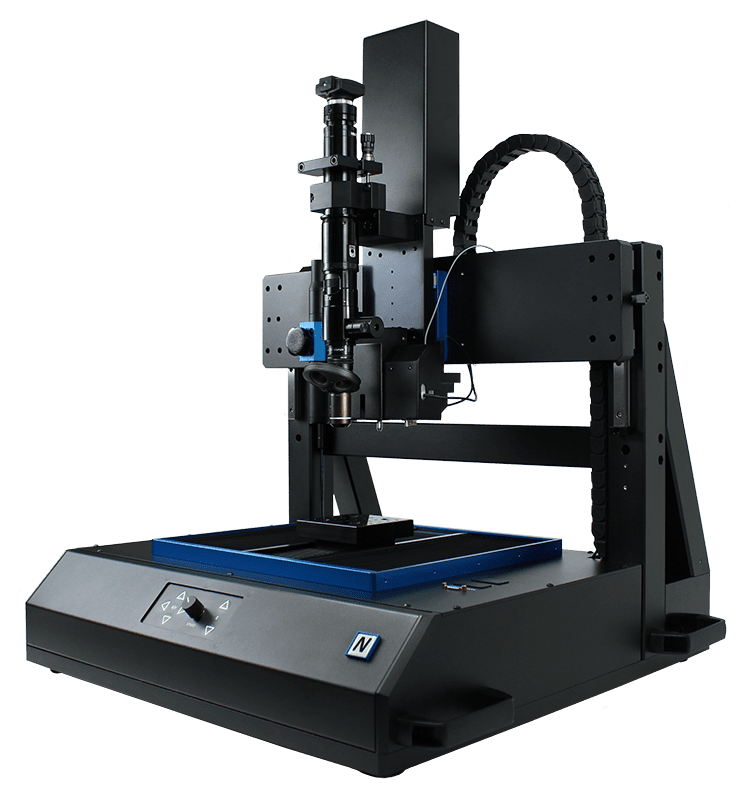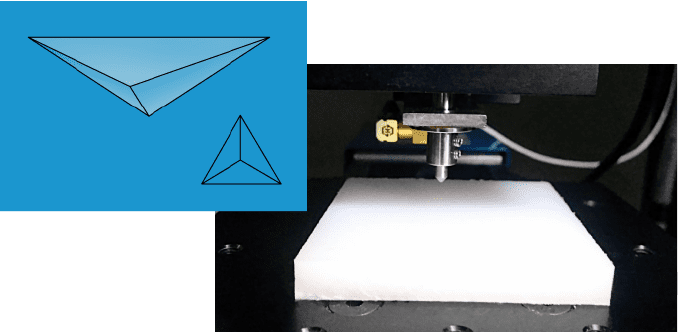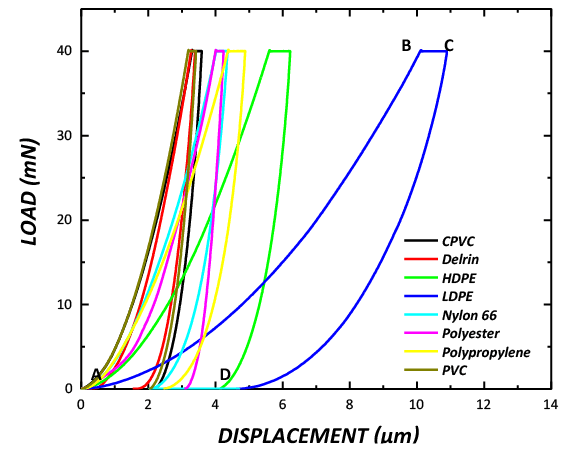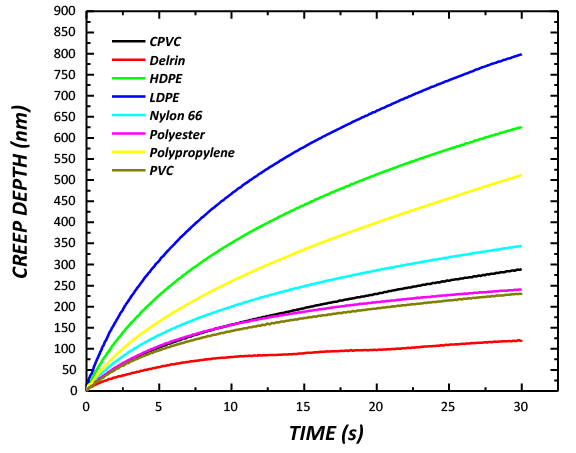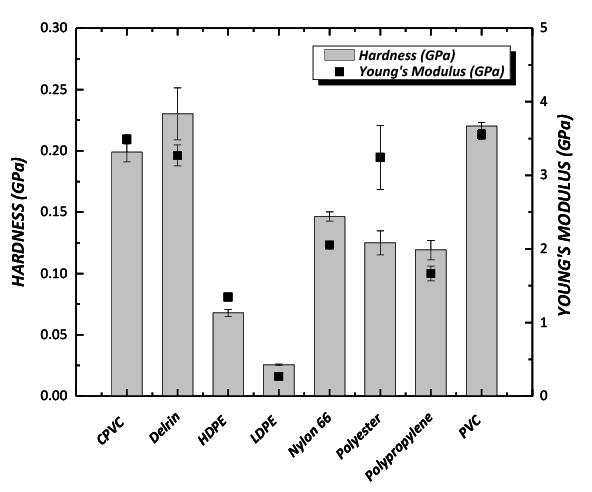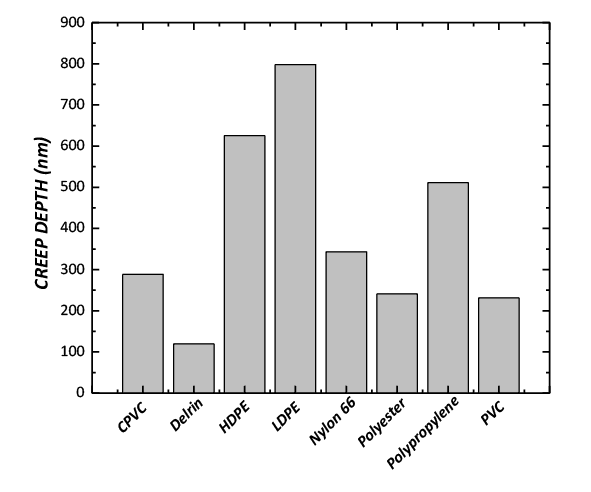INTRODUCTION
As viscoelastic materials, polymers often undergo a time-dependent deformation under a certain applied load, also known as creep. Creep becomes a critical factor when the polymeric parts are designed to be exposed to continuous stress, such as structural components, joins and fittings, and hydrostatic pressure vessels.
IMPORTANCE OF CREEP MEASUREMENT FOR POLYMERS
The inherent nature of viscoelasticity plays a vital role in the performance of polymers and directly influences their service reliability. The environmental conditions such as loading and temperature affect the creep behavior of the polymers. Creep failures often occur due to the lack of alertness of the time-dependent creep behavior of the polymer materials used under specific service conditions. As a result, it is important to develop a reliable and quantitative test of the viscoelastic mechanical behaviors of the polymers. The Nano module of the NANOVEA Mechanical Testers applies the load with a high-precision piezo and directly measures the evolution of force and displacement in situ. The combination of accuracy and repeatability makes it an ideal tool for creep measurement.


